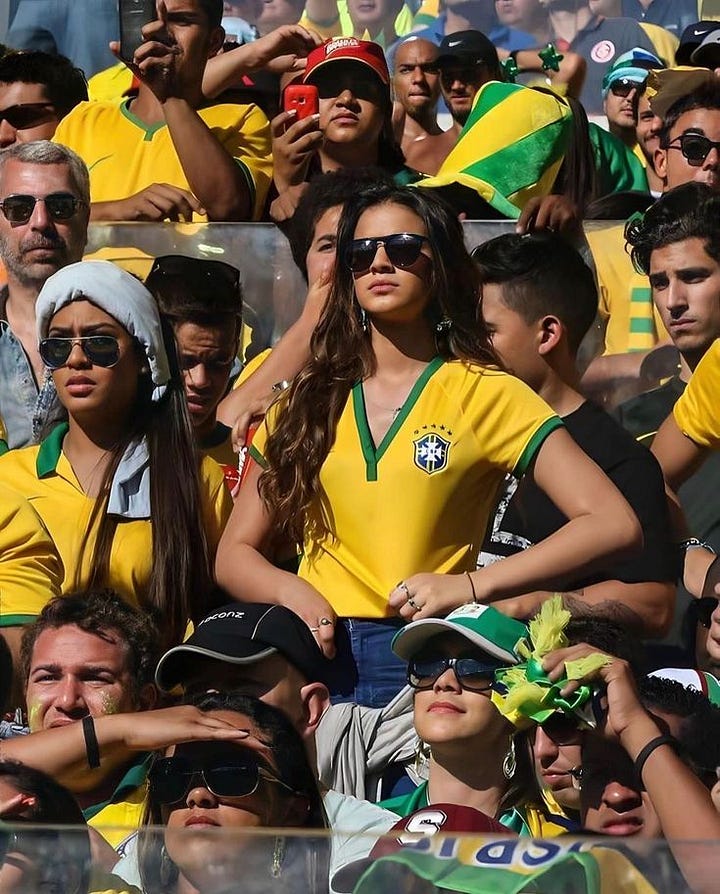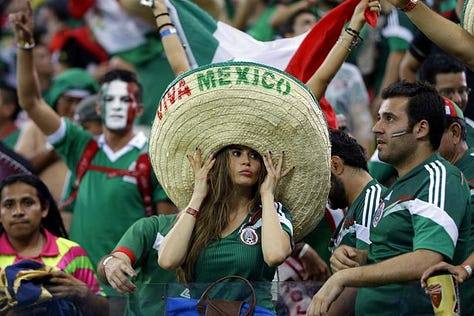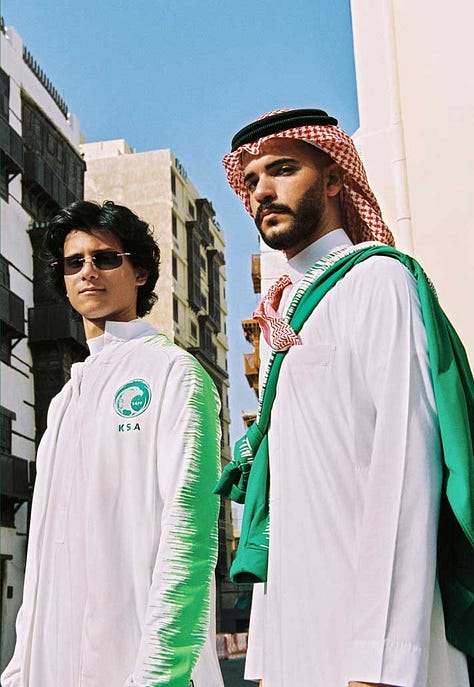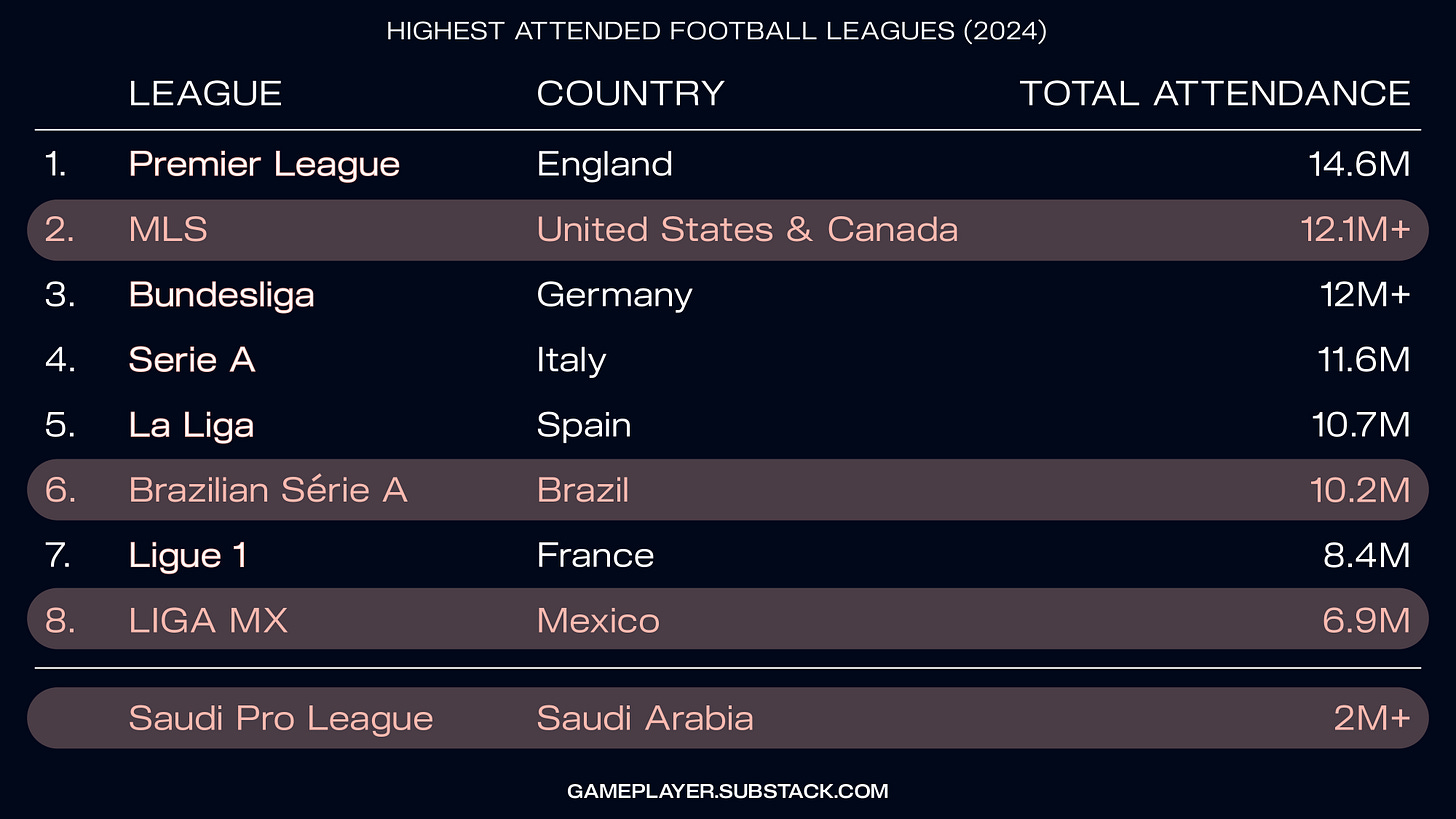Football's Future Is Global, Not Digital
Where the smart money is going, and why digital gimmicks won’t build global fandom.
Everyone’s busy reinventing the wheel. Or worse, inventing new leagues no one asked for. Meanwhile, the smartest players in football are building something far more powerful: real-world dominance. Forget fan tokens and AI-generated tactics. The real game is being played in Miami, Riyadh and Mexico City.
You wouldn’t know it if you only listened to the noise. Scroll through LinkedIn or sit through any sports panel and you’ll hear the same buzzwords on loop: Web3, AI, Gen Z, fan tokens, streaming disruption, the creator economy, immersive experiences.
Every week, someone is pitching the future of football like it’s a TED Talk for VCs. But none of it matters if you’re not winning hearts in actual places.
The next era of football growth will not come from those who crack the algorithm. It will belong to those who understand that fans do not live in platforms. They live in cities, cultures and communities. The biggest wins will come from those who invest there first.
The Distraction
We’ve spent years chasing engagement like it’s a strategy. Tunnel walk content. ‘Interactive’ shirts. New leagues. Gimmick formats. Data-led everything.
It looks innovative on the surface, but underneath it’s often empty.
Too many clubs and rights holders are reacting to trends instead of building legacies. There is a difference between relevance and resonance. One chases clicks. The other builds long-term value.
We have confused novelty with progress. And while everyone is talking about technology, few are asking the more important question:
Where are football’s next real fans going to come from?


The Missed Opportunity
Let’s start with the obvious one. The USA.
Player exports are booming. MLS clubs are climbing in value. The Messi effect was not a gimmick, it was a turning point. The women’s game already leads the world. The National Women's Soccer League has seen a 53 percent rise in attendance since 2019. Stadiums are full. Rights deals are rising. More kids are growing up with football as their first love.
The Middle East has been playing the long game. Saudi Arabia isn’t just stockpiling talent. It is building infrastructure, fuelling domestic interest and reshaping how football fits into global soft power. The Public Investment Fund (PIF) is central to the kingdom’s Vision 2030 strategy, using sport as a lever to diversify its economy and reduce dependence on oil. The World Cup after next will be hosted there, not by accident but by design. This is strategic nation-building through sport, and it’s working. The UAE has already shown what a mature, multi-sport, government-backed approach can look like.
Then there’s Latin America. A footballing superpower by culture, not by commerce, but that is changing. Over 55 percent of Latin America's population is under the age of 30, which means more than 350 million young people. The energy is there, the digital fluency is there, and the passion is generational. Brazil alone has the most valuable national team in the region, valued at over 920 million euros. Latin America is a sleeping commercial giant. With the right investment and vision, LatAm could become football’s commercial heartbeat, not just its talent factory.
These are not soft signals. They are data points showing where momentum is already building, quickly and with intent.
Digital Isn’t The Destination
Digital is a means, not the end. It should amplify the product, not be the product.
Tech can make the experience better: smarter content, better access, smoother ticketing. But it does not replace human connection, local relevance or stories that hit the soul.
The clubs and leagues that win will be the ones who build for people, not for platforms. Football is not a software update. You do not unlock new fans through UX. You build them by showing up, consistently, physically and emotionally, in their lives and in their language.
Digital might grab attention. Roots hold it.



Where the Smart Money’s Going
Look at where capital is flowing. Not the headlines. The actual deals.
MLS is expanding. USL is building serious structure and could quietly take over the rest of the American pyramid. In a country with demand far bigger than supply, that is a growth story with legs.
The Saudi Pro League is not just spending money, it is building visibility. Creating content. Investing in local development. If they get the sporting product to match the narrative, they will have something powerful.
And globally, second-gen diaspora fans are building a new kind of supporter identity. One that is deeply tied to culture and heritage, but informed by global access. Whether it’s a Ghanaian in London, a Colombian in Madrid or a Lebanese kid in Montréal, this new fandom is personal, portable and passionate.
If you are a brand, an investor or a league exec, stop worrying about whether your app has the right filters.
Start asking where your next 10 million fans actually live, and how you plan to meet them there.
Football’s future is global, not digital.
The next frontier isn’t virtual.
It’s physical. It’s emotional. And it’s already in motion.
Build for people. Not pixels.
Thanks for reading GAMEPLAYER.
Through CAOS, GAFFER, and over 100 football contracts, transfers, brand deals, and equity-driven partnerships, I’ve seen power shift from clubs to investors, brands to athletes, and legacy to culture.
I break down what matters. Private equity takeovers, athlete-led media, billion-dollar sports IP, and the future of merchandising and streaming.
This isn’t just commentary. It’s about who’s making the real moves and what’s coming next.








🗣️ Build for people, not pixels - the truth ‼️
Totally agree. I think It also applies to the fact that football is changing its core values in order to chase people who have never been fans and who won't be fans any longer than the hype around a viral tiktok lasts. You have to play the long game and aim for true conexion, that's the goal. Love your column man, cheers